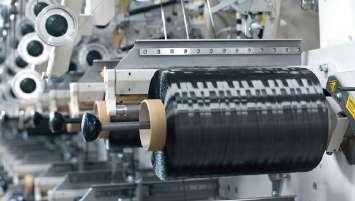COVER STORY
9
DIGITIZATION: THE NEW ERA IN TEXTILE AND APPAREL INDUSTRY MS. SOMASREE ROY Textile Value Chain Textiles are used in a wide range of industries, including fashion, bedding, interior design, healthcare, and even automobiles. Textile companies have the opportunity to attain Industry 4.0 leadership and provide automated control over the whole textile creation process thanks to advances in digital technology. Policymakers, distributors, and customers along the global and regional supply chain are increasingly demanding improved efficiency and transparency.Theindustry’s evolution towards a vertically organised, sustainable value chain is being aided by trends such as sustainability and digitization. The importance of digitization has never been greater. Not only the fashion sector is seeking for new ways to improve efficiency, but with the current worldwide pandemic affecting supply chains, we can all agree that having a digital “backup Plan” is no longer an option. Fashion firms and their suppliers’ global partnerships must become more digital. Small-scale manufacturing was turned into large-scale enterprises during the first industrial revolution. With the advent of machinery, companies were able to easily mass-produce clothing. Since then, progress has continued, and it does not appear to be slowing down. Outsourced solutions for digitization, IoT integration, AI, and ERP are now available, allowing the textile industry to attain Industry 4.0 leadership and simplify the entire fabrication process, from design and colouring to fibre construction, fabric production, finishing, and delivery. So, let’s have a look at the technologies that are having the biggest impact on the textile and fashion industries.
Image Source: CB Insights
Internet of Things (IoT) The adoption of IoT is one of the greatest opportunities for the retail sector. By allowing us to engage with everyday objects via the internet, this technology mechanises our world. This suggests a significant shift in the fashion industry. According to the findings of a recent Retail Vision Study, 70% of global retail decision makers are willing to use the Internet of Things to enhance consumer experiences. NADI X, a pair of yoga trousers with built-in sensors that vibrate to bring users into alignment as they move through various yoga positions, will include digital capabilities that facilitate communication between retailer and client. Artificial intelligence (AI) Artificial intelligence is transforming the textile industry’s overall production process and business practises. Artificial intelligence (AI) can access and gather historical and real-time operational data, generating insights that can help enhance operational efficiency.
It’s easier to alter processes to maximise human workers’ skills when you have a comprehensive picture of your operations. Whether its product cost, textile manufacturing, data collection, just-in-time production, quality control, or computer integrated manufacturing, AI has an impact on every step of the process. Some of the most commonly utilised AI applications in textile manufacturing are pattern inspection, defect detection, and colour matching. Enterprise Resource Planning (ERP) Enterprise Resource Planning, or ERP, has been used in the Apparel and Textile sector for a long time. In the textile and clothing industries, ERP software helps you manage the company’s overall process from start to finish. An ideal ERP system employs a single database that allows different departments to communicate with one another without the need for data to be maintained in several locations. The technology aids in the better management of essential areas of textile manufacturing such as raw materials, stock, finance, quality,
SEPTEMBER 2021





















